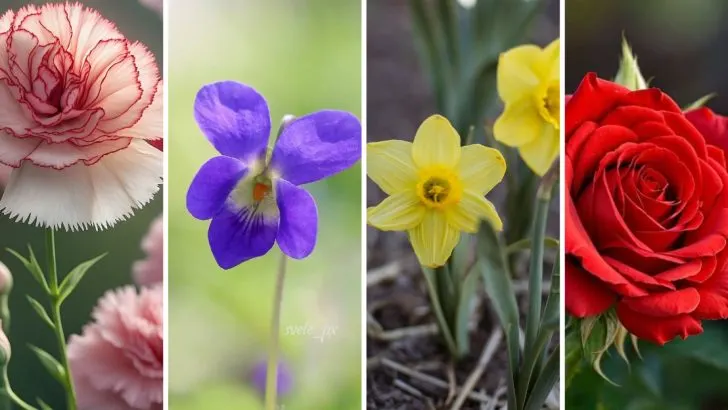Did you know that each month of the year is represented by a unique birth flower? Just as birthstones symbolize the personality and traits of those born in each month, birth flowers hold significant meaning, too.
These blooms are not only beautiful but are rich in symbolism, offering insights into love, strength, and more. Whether you’re looking for the perfect gift or curious about the flowers linked to your birth month, here are the 12 birth flowers you didn’t know represent each month of the year!
January – Carnation
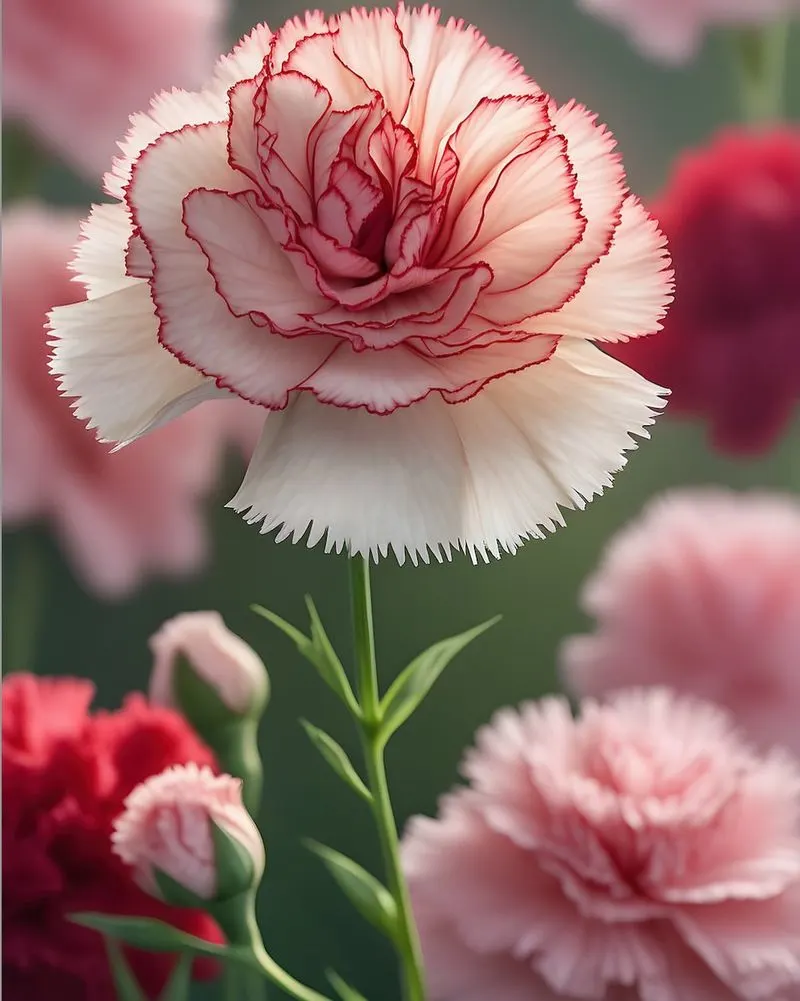
Carnations are January’s birth flower, known for their ruffled petals and wide range of colors. They symbolize admiration, love, and distinction, making them a popular choice for expressing heartfelt emotions. In the cold of winter, these flowers bring warmth and cheer, often seen in festive decorations. Their rich history dates back to ancient Greece, where they were used in ceremonial crowns. With a variety of hues, from soft pastels to vibrant reds, carnations offer versatility in floral arrangements. Pairing them with greenery can enhance their beauty, adding a touch of elegance to any bouquet.
February – Violet
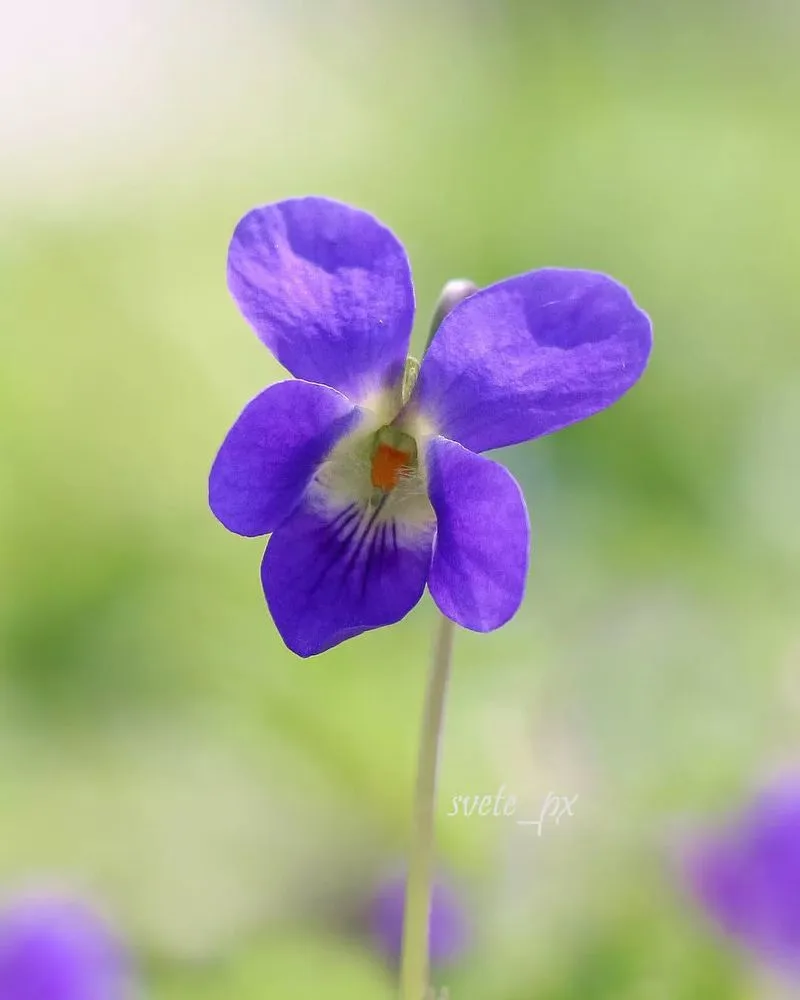
Violets, with their delicate petals and vibrant hue, represent February. These petite flowers symbolize faithfulness, humility, and spiritual wisdom. Their deep purple color stands out in the last days of winter, offering a hint of the spring to come. Often found in shaded areas, violets thrive in cooler climates. They make a charming addition to gardens and potted arrangements alike. The sweet scent of violets has been cherished in perfumery and culinary uses, adding a unique flavor and fragrance. Embrace their subtle beauty and the promise they hold for warmer days.
March – Daffodil
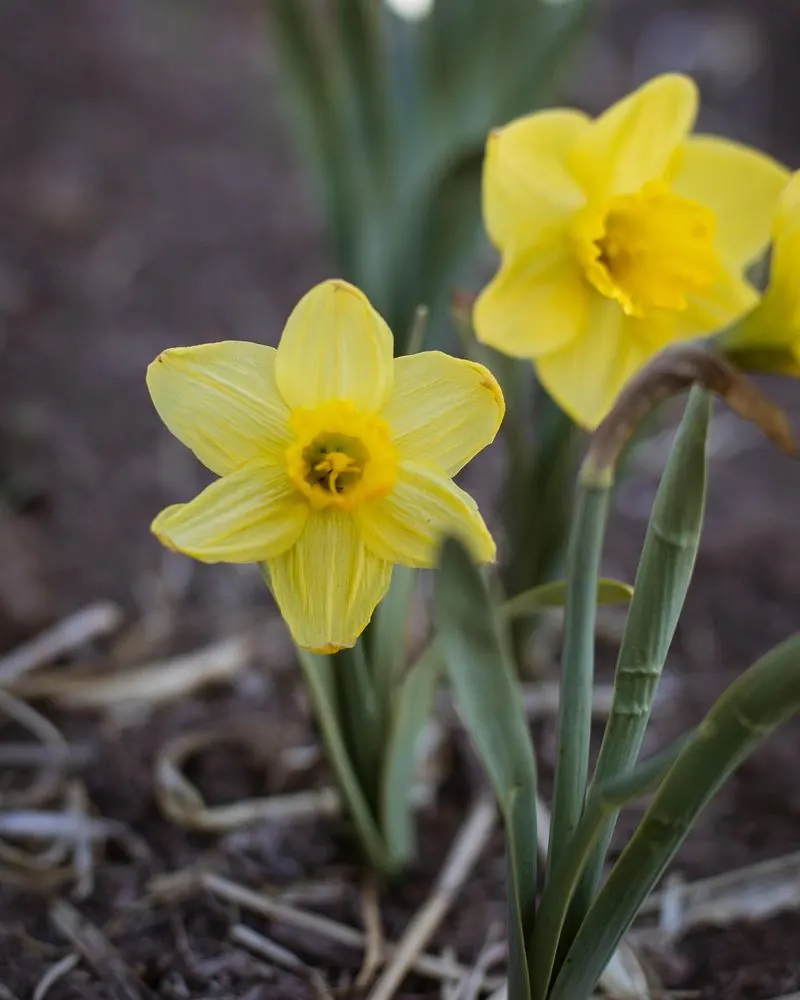
March brings daffodils, the heralds of spring, with their bright yellow petals and trumpet-like centers. These cheerful flowers symbolize rebirth and new beginnings, fitting for the season of renewal. Often associated with hope and resilience, daffodils are a favorite in gardens and floral displays. Their early bloom makes them a symbol of optimism and vitality. Planting daffodil bulbs in the fall ensures a vibrant display come spring. Their low maintenance and deer-resistant nature make them a practical choice for any gardener. Enjoy their sunny disposition and uplifting presence.
April – Daisy
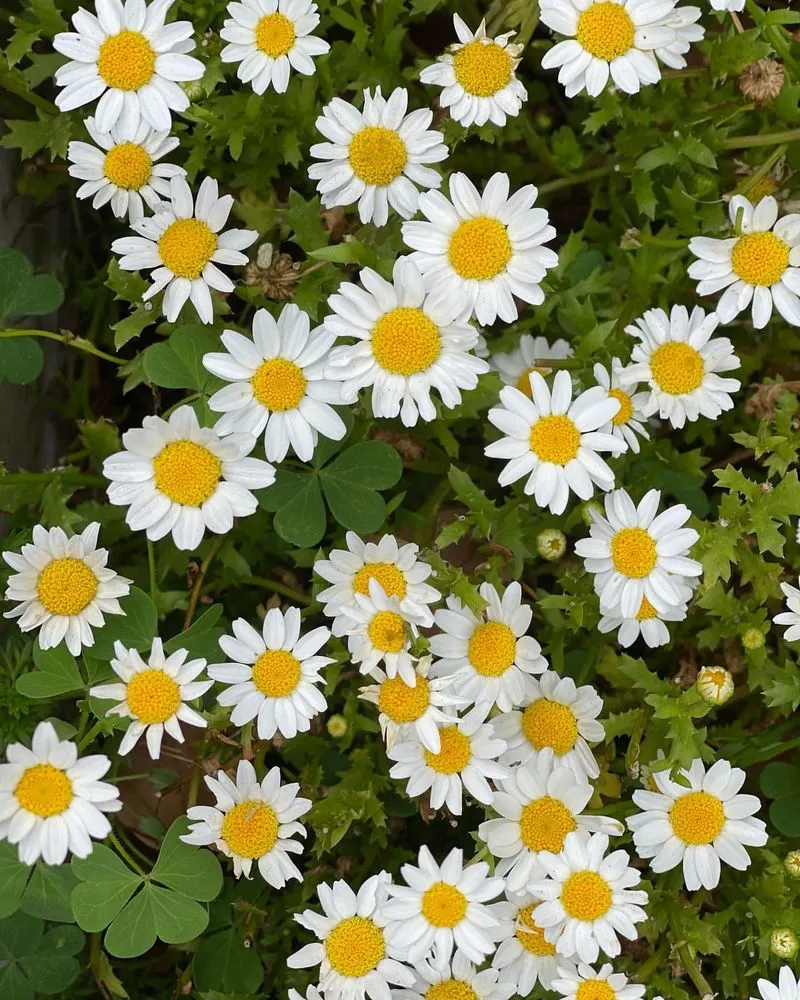
Daisies, the birth flower of April, are synonymous with innocence and purity. Their simple yet striking appearance, with white petals surrounding a golden center, captures the essence of spring. Traditionally, they represent new beginnings and true love, making them a popular choice for weddings and celebrations. Daisies thrive in sunny locations and are easy to grow, requiring minimal maintenance. Their cheerful blooms attract pollinators like bees and butterflies, contributing to a healthy garden ecosystem. Incorporate daisies into your garden for a splash of brightness and a symbol of enduring love.
May – Lily of the Valley
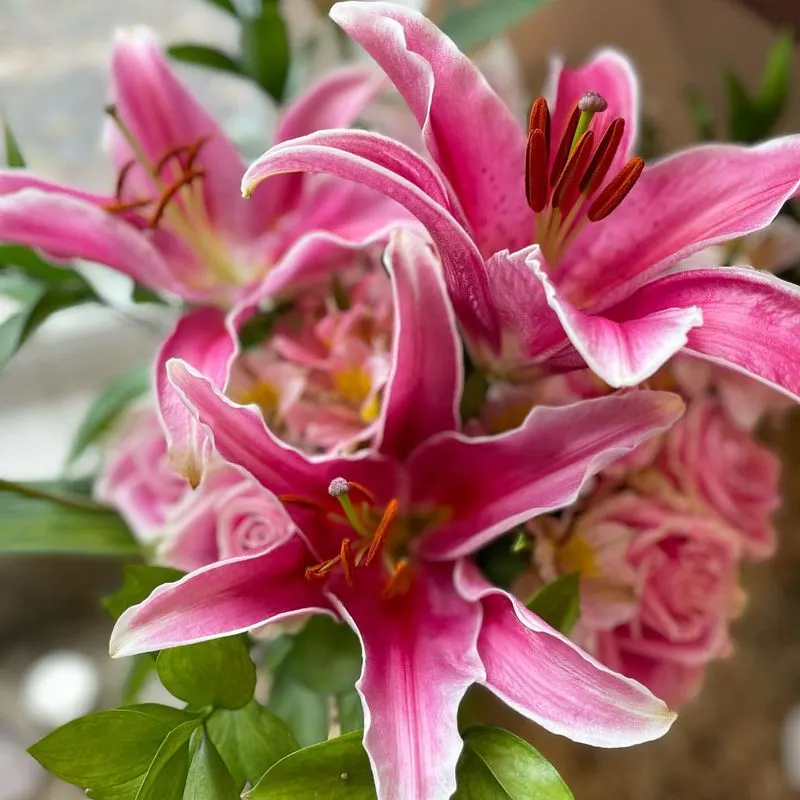
Lily of the Valley graces May with its delicate, bell-shaped flowers and sweet fragrance. Symbolizing purity, humility, and happiness, these blooms are cherished in bridal bouquets and spring gardens. Their enchanting aroma and graceful appearance have made them a favorite for centuries. Despite their delicate look, they are hardy perennials, thriving in shaded areas with well-drained soil. Lily of the Valley spreads through underground rhizomes, offering a lush ground cover over time. However, care must be taken as all parts of the plant are toxic if ingested. Enjoy their beauty responsibly.
June – Rose
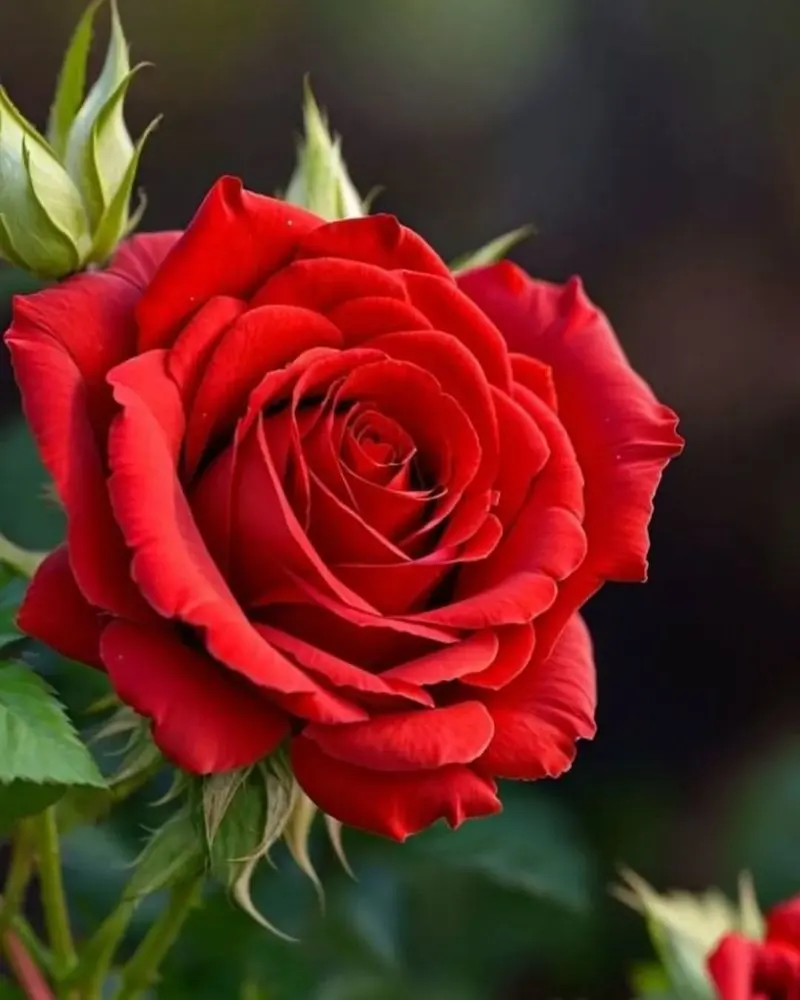
Roses, June’s birth flower, are universally adored for their beauty and fragrance. Each color carries its own meaning—red for love, white for purity, and yellow for friendship. These iconic flowers have been celebrated in art, literature, and rituals throughout history. Roses thrive in well-drained soil and sunny spots, demanding attention and care to flourish. Regular pruning and fertilization can enhance their blooming potential, offering a spectacular display. Their versatility extends to perfumes and culinary delights, adding elegance and aroma. Celebrate life’s special moments with the timeless allure of roses.
July – Larkspur
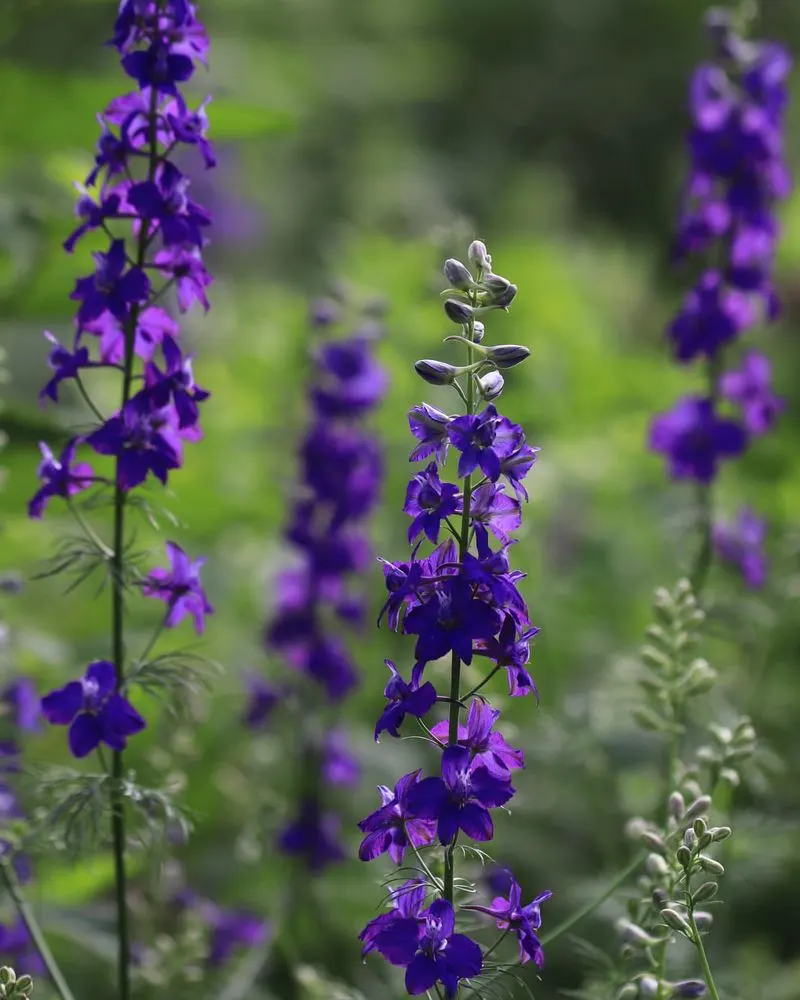
Larkspur, with its tall spikes adorned with vibrant blooms, represents July. The flowers come in a spectrum of colors, primarily blues and purples, symbolizing love and positivity. Often found in wildflower meadows, they add height and drama to garden borders. Larkspurs are beloved for their ability to attract pollinators like bees and butterflies. They require well-drained soil and plenty of sunlight to thrive. Despite their beauty, larkspurs can be toxic to humans and animals if consumed, so it’s important to handle them with care. Enjoy their dynamic presence in your summer garden.
August – Gladiolus
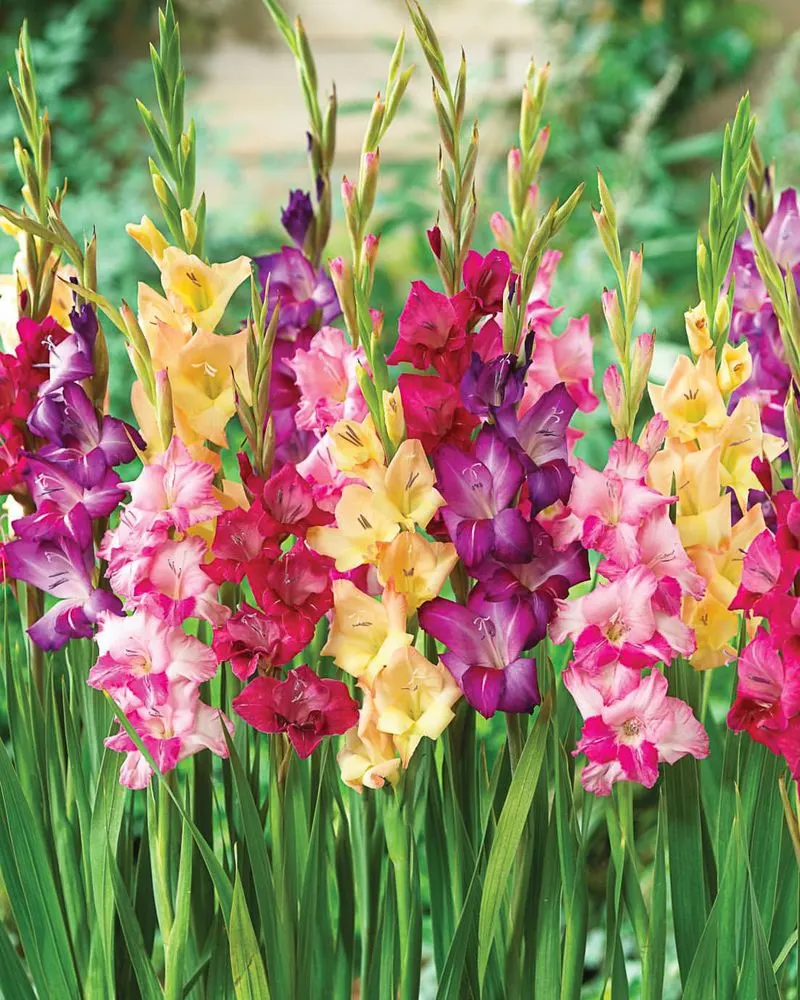
Gladiolus, the birth flower for August, captivates with its tall, striking spikes of blossoms. These flowers symbolize strength, integrity, and infatuation. Their sword-like leaves and dramatic blooms make them a standout in any floral arrangement. Originating from South Africa, gladiolus thrives in sunny climates and well-drained soil. They are often used in bouquets and as garden focal points. With a variety of colors available, gladiolus can complement any color scheme or occasion. Their long-lasting blooms bring life and vibrancy to late summer gardens, celebrating the season’s abundance.
September – Aster
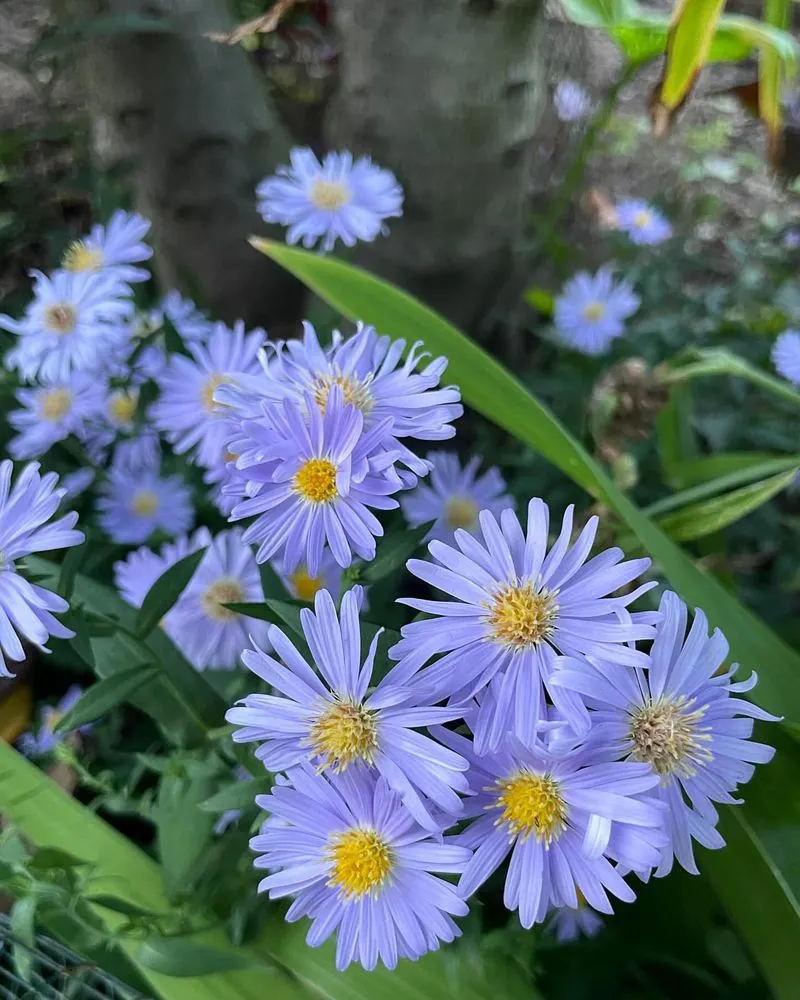
Asters, September’s birth flower, are beloved for their star-shaped blooms and vibrant colors. These flowers symbolize wisdom, valor, and faith, adding depth to any floral arrangement. Blooming in late summer and fall, asters provide a burst of color as other flowers fade. They thrive in sunny locations with well-drained soil and are a favorite among pollinators. Easy to grow, asters require minimal care and bring lasting beauty to gardens. Their versatile nature makes them suitable for borders, containers, or wildflower gardens. Enjoy the serene beauty and symbolic richness of asters.
October – Marigold
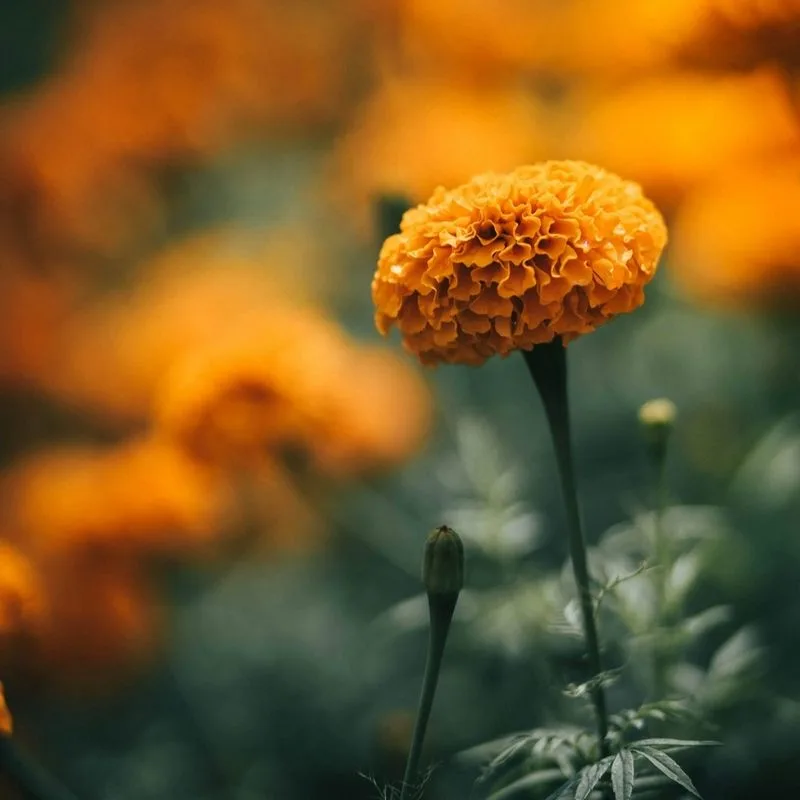
October is brightened by marigolds, known for their vibrant orange and yellow blooms. These flowers symbolize warmth, creativity, and passion. Marigolds are often used in festivals and celebrations around the world, adding a touch of brightness and joy. Easy to grow, they thrive in sunny spots and well-drained soil, making them a favorite in gardens and containers. Their pungent scent is known to deter pests, offering a natural garden defense. Embrace the lively spirit of marigolds, and let their cheerful presence illuminate your autumn landscape with color and zest.
November – Chrysanthemum
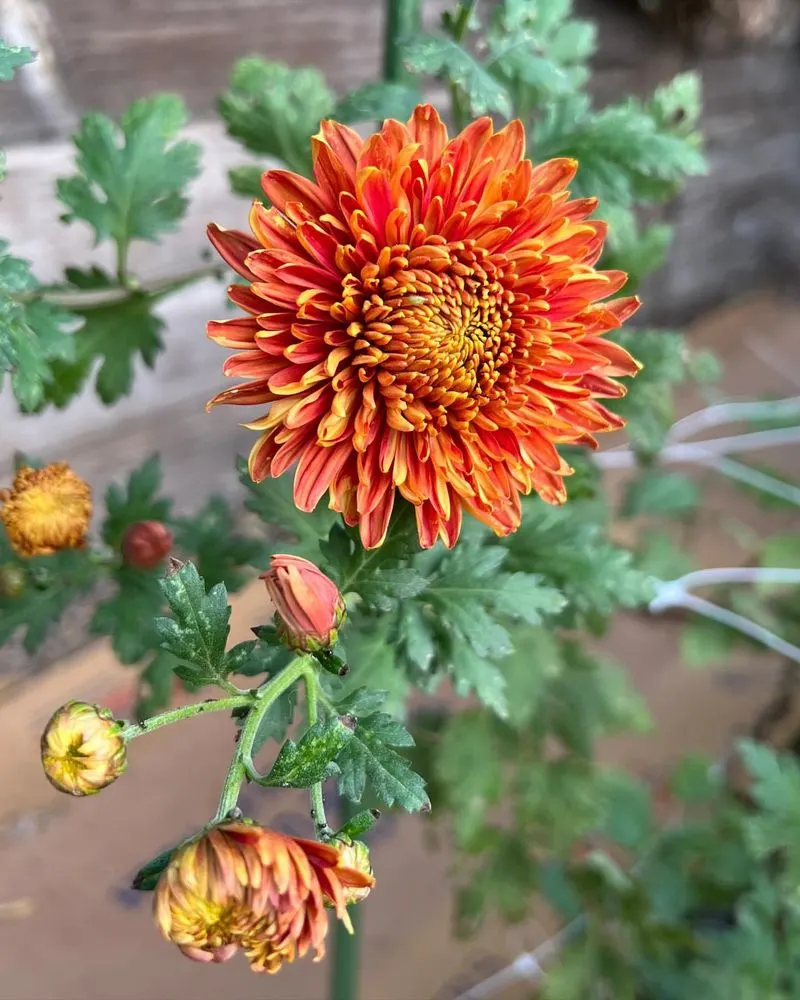
Chrysanthemums, November’s birth flower, offer a burst of color and form in late autumn. They symbolize loyalty, friendship, and joy, making them a cherished addition to gardens and arrangements. These hardy perennials bloom in a variety of shapes and hues, from classic pom-poms to delicate daisies. Chrysanthemums thrive in fertile, well-drained soil with plenty of sunlight. Regular pruning can promote fuller blooms and a more robust plant. They are versatile in both garden and floral settings, providing a vibrant display when most other flowers have faded. Relish their beauty and symbolism.
December – Holly
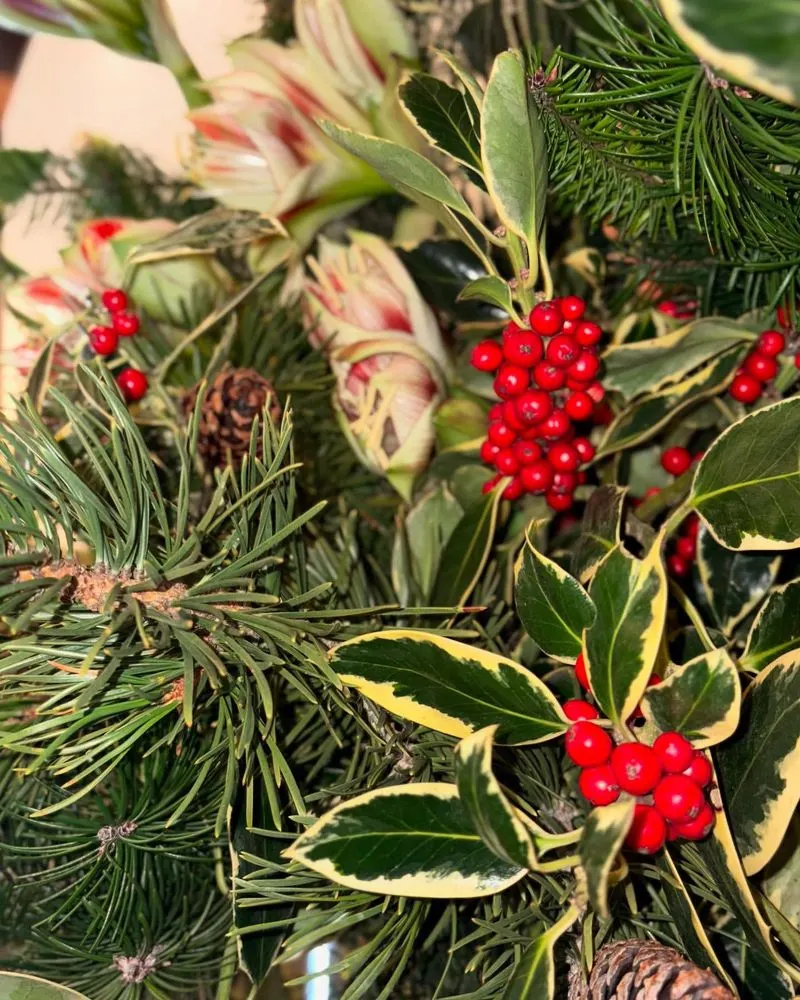
Holly, the birth flower for December, is renowned for its glossy green leaves and bright red berries. Symbolizing protection, joy, and celebration, it is a staple in holiday decorations. Holly’s evergreen nature and vibrant appearance bring cheer during the cold winter months. This hardy plant thrives in partial shade and well-drained soil, making it suitable for gardens and indoor decor alike. Caution is advised, as holly berries are toxic if ingested. Incorporate holly into your festive arrangements, and revel in its timeless beauty and significance during the holiday season.

